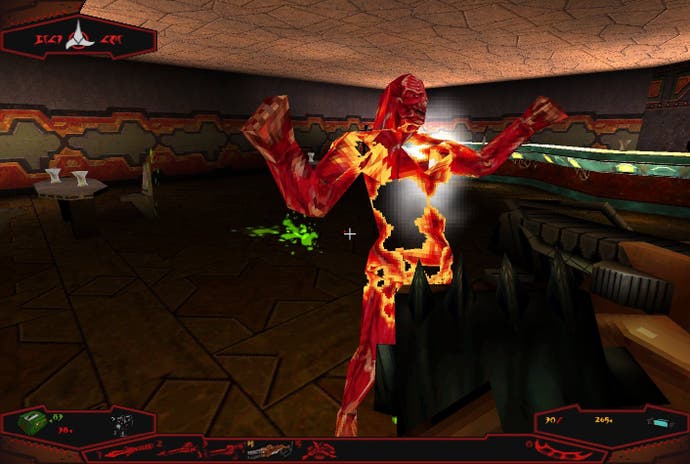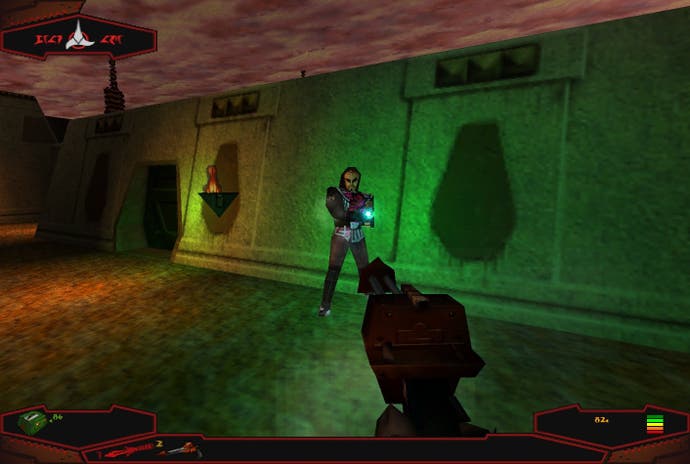Retrospective: Klingon Honor Guard
K'lap t'rap!
I'd like to be able to tell you that I'm not that into Star Trek. Really, I'm not. Which makes it my eternal frustration that I appear to know frightening amounts about it. This is probably in no small part due to my having seen every episode of The Next Generation, primarily because it could be used to distract our A-level Chemistry teacher, Mr Williamson, coaxing him into discussing the events of the previous night's episode rather than banging on tediously about benzene rings and titration.
I failed my chemistry A-level. (Entirely my fault, not the lovely Mr Williamson's.) I am fairly sure I could still pass one based on Star Trek. I say all this to give the following some context: I had fond memories of Klingon Honor Guard.
So these memories didn't come from some crazed love for Star Trek of the mid-nineties, nor fanboyism. Going back to play it again, apparently these memories came from being a bit of an idiot. With two significant exceptions, as hard as I've tried to love it, it doesn't stand up. But those exceptions are very significant, and completely made revisiting the game once more worthwhile.
The first is grav boots.

Like its full title, Star Trek: The Next Generation - Klingon Honor Guard is a very long game. Far too long. Longer than any first-person shooter should ever reasonably be. Worry not, I'm not some colossal idiot whose brain has been so addled by the brevity of modern shooters that anything lasting more than five hours leaves me scared and confused. Having gone back to see quite a few nineties shooters for these Retro Sunday articles, I've remembered with joy quite how huge the FPS used to be. Huge, and just packed with sublime ideas and fantastic level design, games like LucasArts' Jedi Knight knew what they were doing. MicroProse possibly did not with its Klingon-focused brown-o-fest.
Built using the Unreal engine, managing to make the majority of its first half as monotonously brown as Quake was quite a victory. But this colour choice matches so many of the other decisions made. For instance, you're playing as a Klingon - an awesome and auspicious start, putting you in the position of being a baddy in Roddenbury's shiny plastic world. The potential for mischief, for a game in which you get to shoot at silly Federation goodiebags, shouting Shakespeare and using the same Bird of Prey explosions in subsequent films (see, I know that. Why do I know that?) was all there. So they chose to make a game about shooting at other Klingons.

More problematic for the first enormous stretch of the game is the locations. Rebel Klingon bases (the House of Duras, if you wondered), fighting a muddle of Klingons, Andorians (who for some reason my character keeps calling Ferengi), and Nausicaans (the ones who stabbed young Picard... OH WHY DO I KNOW THAT?), make for extremely repetitive locations. Long series of identical corridors, identikit tunnels, and large buildings lacking individual character, all make for a strangely confusing arena.
To KHG's credit, each level has a goal, but no clear path to reach it. This makes for some very liberating play, with multiple routes available, entire sections skippable, and a message at the end of each level informing you of how many secrets you missed, enemies you didn't kill, and items not discovered. However, this freedom is somewhat cheapened by the confusion of the levels looking so damned formulaic that half the time you've no idea whether you've been through an area previously.








